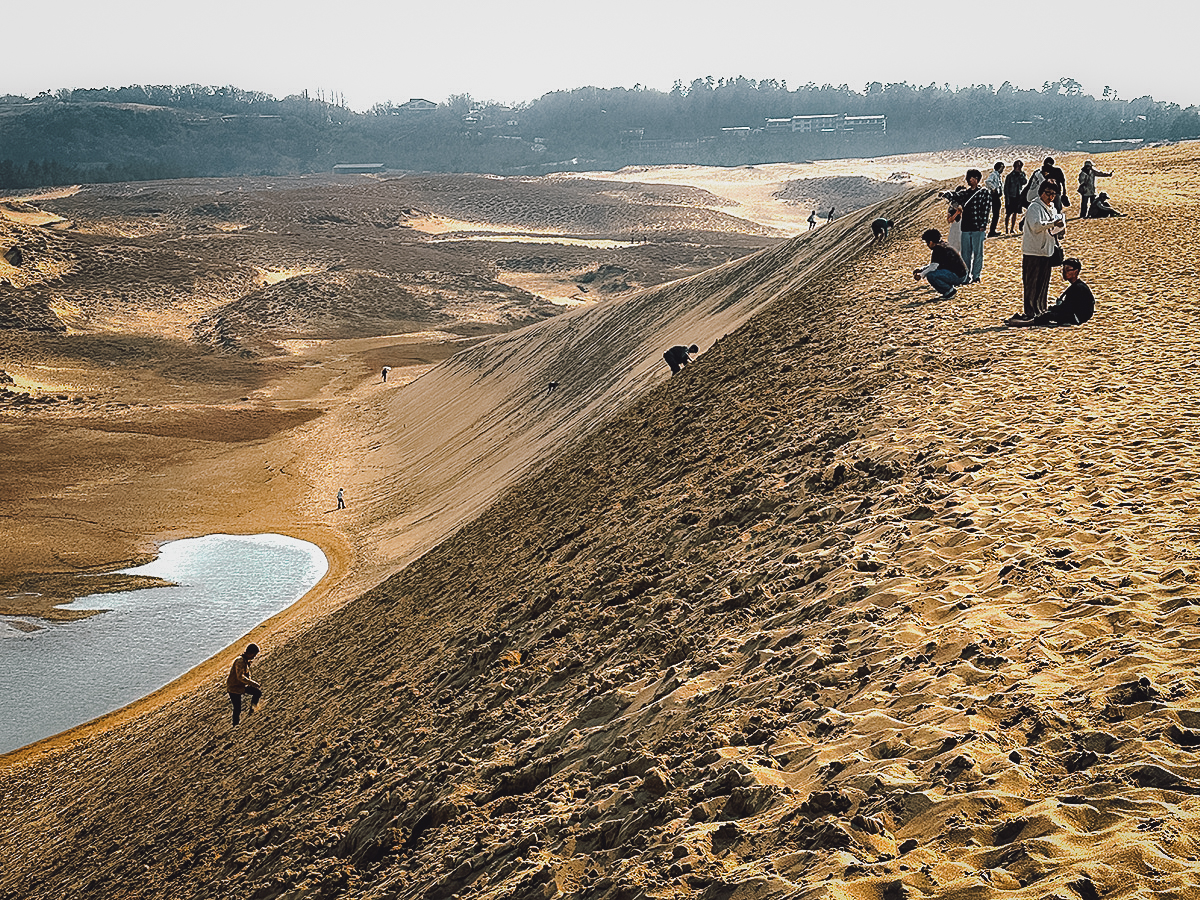SUMMARY HIGHLIGHTS
- Aside from destinations within the Kansai region, the Kansai Wide Area Pass can take you as far as Tottori, Okayama, and Takamatsu.
- I saved a total of JPY 18,170 on transportation using the pass.
Ten years ago, I was taken on a press trip to Amanohashidate and Kinosaki Onsen. It was a fam trip so we spent no more than a couple of hours at either place, but it was enough to pique my curiosity and make me want to go back.
Travel west along the San’in coastal region and you’ll soon find yourself in Tottori, home to giant sand dunes measuring up to 50 meters (164 ft) high[1]. I had never been but I’ve always wanted to go, pulled by the allure of a place that looked completely out of place in Japan.
Considering all three destinations were located within the same region in Japan, visiting them on the same backpacking trip from Kyoto made sense – a trip that was made easier, more convenient, and cheaper thanks to the JR West Kansai Wide Area Pass.
In this article, we’ll talk about what the Kansai Wide Area Pass is, where it can take you, and potentially how much you can save with it.
EXPLORE KANSAI QUICK LINKS
To help plan your trip to the Kansai region, I’ve compiled links to recommended tours, experiences, and other travel-related services here.
JR WEST KANSAI WIDE AREA PASS
You can purchase a Kansai Wide Area Pass from trusted third-party websites like Klook, but getting it online from JR West has its benefits. I’ll explain why in the FAQs section of this guide.
EXPERIENCES
- Osaka: Learn How to Make Osaka’s Famed Box Sushi
- Kyoto: Fushimi Inari Hidden Hiking Tour
- Nara: Experience Tea Whisk Making at a 500-Year-Old Workshop
- Kobe: Private Tour of the Takenaka Carpentry Tools Museum
- Himeji Castle: Himeji Castle Private Night Tour
- Lake Biwa: Make Miso & Explore Japan’s Fermentation Culture
OTHER SERVICES
GUIDE TABLE OF CONTENTS
WHAT IS THE JR WEST KANSAI WIDE AREA PASS?
The JR West Kansai Wide Area Pass is a rail pass that allows foreign tourists unlimited travel in the Kansai region (and a few neighboring prefectures) for five (5) consecutive days. It’s similar to the Kansai Area Pass, but offers a wider coverage area.
Only foreign visitors with a “Temporary Visitor” visa status can use the Kansai Wide Area Pass. Non-Japanese residents aren’t eligible to use it, but they can get a similar pass known as the Kansai Wide Area Excursion Pass.
Pass holders can travel by JR train (including limited express trains), JR Sanyo Shinkansen (between Shin-Osaka and Okayama), select non-JR trains, and select local JR buses to popular destinations within and around the Kansai region (see map below). It also entitles bearers to free use of rental bicycles at designated Ekirin Kun outlets within the coverage area.
The pass costs JPY 12,000 (May 2025) and can be purchased online on JR West or through partner websites like Klook. It can also be purchased at select JR stations and travel agencies in Japan. The Kansai Wide Area Pass is a physical ticket, not a digital pass, so you’ll need to claim it from a major JR station within the covered area before using it.
The following map* shows the areas covered by the Kansai Wide Area Pass. Pass holders can travel along these routes as often as they want within the validity period of their pass. Jump to the FAQs section of this guide for more information on the JR West Kansai Wide Area Pass.
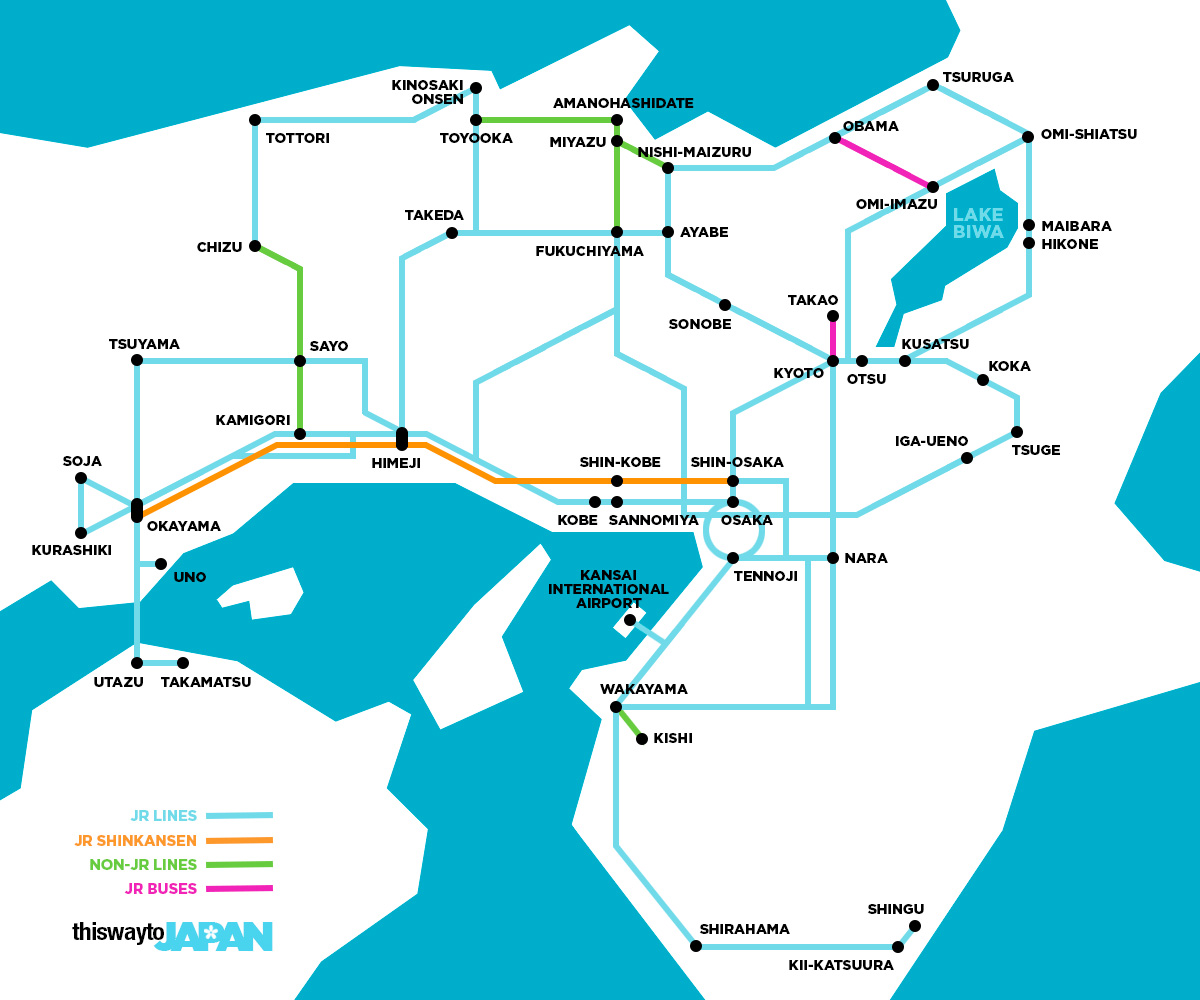
*Please note that the map above is a simplified version to help you visualize available routes. You can visit the JR West website for a more detailed map.
PLACES TO VISIT WITH THE KANSAI WIDE AREA PASS
This isn’t a complete list but highlighted below are some of the most popular destinations you can visit using a JR West Kansai Wide Area Pass.
Osaka
Kansai International Airport is located in Osaka, making this vibrant city the point of entry for many people’s forays into the Kansai region. Home to Universal Studios Japan and Osaka Castle, it’s one of the most visited destinations in Japan thanks to its exciting nightlife and many restaurants and shopping options.
I stayed in a different city every night while traveling with my Kansai Wide Area Pass, but if you’d rather stay in one place and do day trips, then Osaka’s central location makes it one of the most convenient places for you to do that. I suggest staying near Osaka Station to reduce transit time.
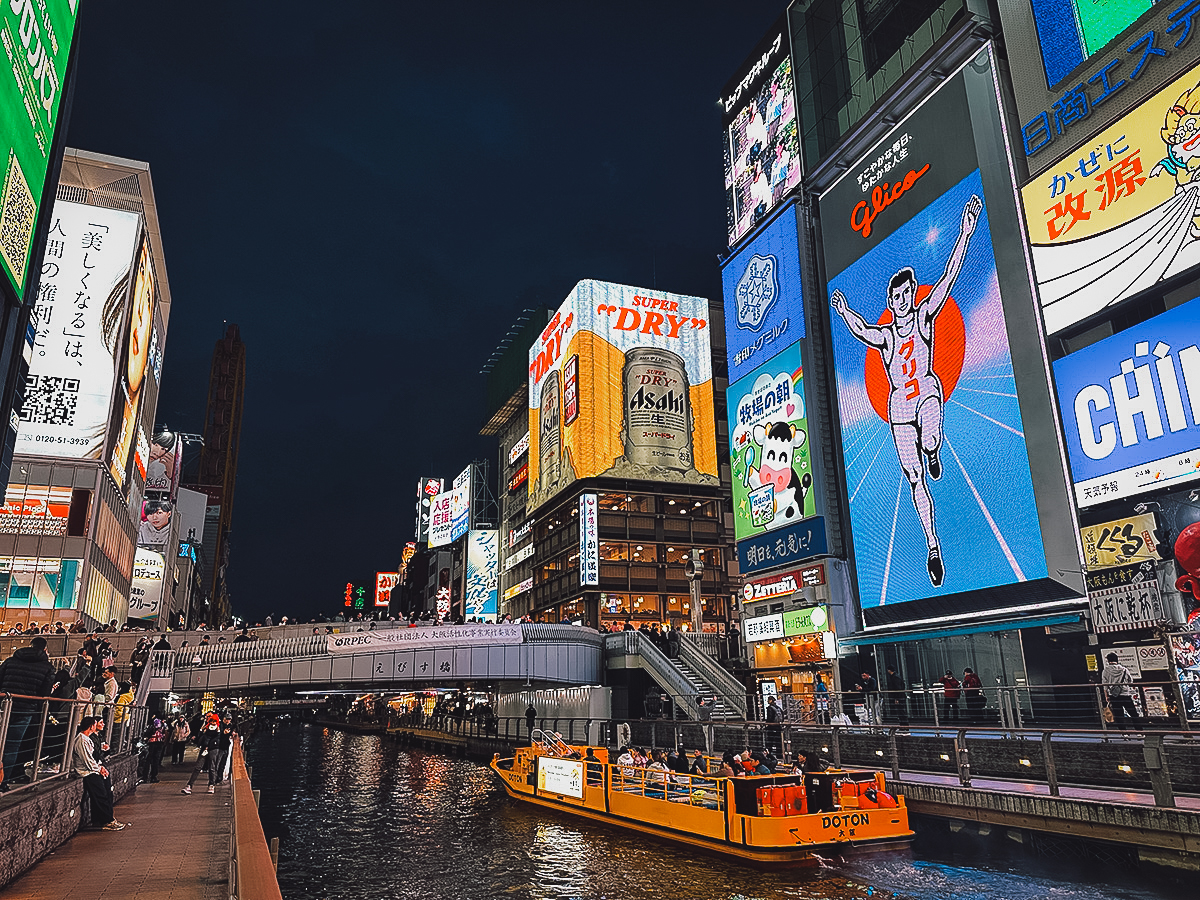
Kyoto
Kyoto needs little introduction. Home to over 2,000 temples and shrines[2], the former capital of Japan is a center for arts and culture and one of the most fascinating destinations in the country. If the traditional side of Japan stirs your imagination, then there’s no better place to experience it than Kyoto.
There’s so much to see and experience in Kyoto that it deserves more than a day. In my opinion, even a week isn’t enough, but you can visit the major sights in a day or two, especially if you go on a guided tour.
Kiyomizu-dera, Fushimi Inari Taisha, Kinkaku-ji, and Arashiyama Bamboo Grove (pictured below) are just a few of the many highlights in Kyoto. Be warned though that Kyoto is at the center of the overtourism problem in Japan. Its most popular attractions will likely be crowded so visiting early is key.
Like Osaka, Kyoto can be a convenient base from which to explore the Kansai region using your Kansai Wide Area Pass. If you’d like to do that, then staying near Kyoto Station is ideal.
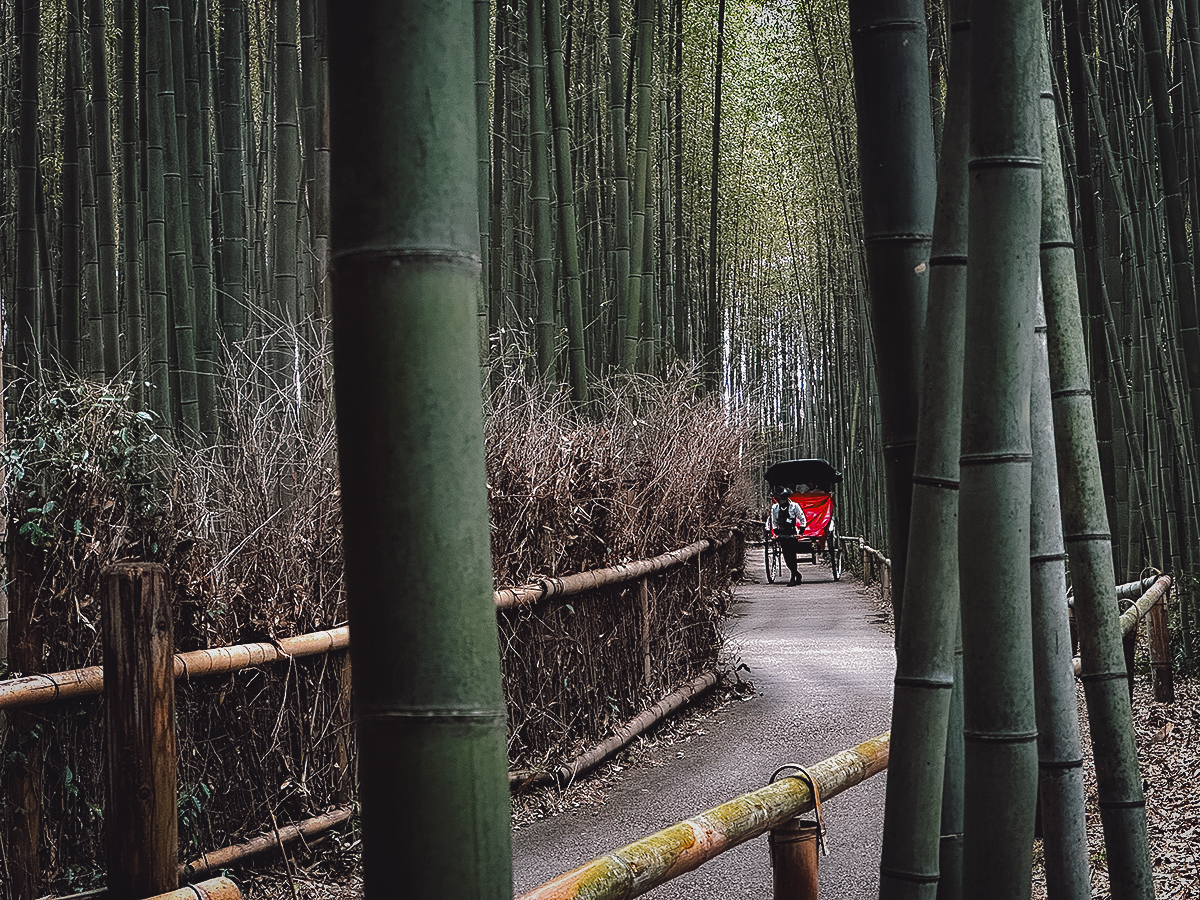
Nara
If Kyoto’s temples intrigue you, then you’ll surely enjoy Nara as well. Home to many temples and shrines, not to mention over a thousand free-roaming sika deer, I like to think of it as “Kyoto-light with deer.”
Like Kyoto, Nara is home to a high concentration of heritage sites. Most notable are the Historic Monuments of Ancient Nara, a group of eight historical sites collectively inscribed as a UNESCO World Heritage Site. Half of those those eight historic monuments are located in and around Nara Park – which is pretty much where you’ll find 99.9% of the tourists in Nara.
You can explore Nara Park on your own or join a guided tour. The park is also home to Nara National Museum, a pair of beautifully landscaped Japanese gardens, and free-roaming sika deer that you can feed with shika senbei crackers. Be warned though that the deer can become quite aggressive with food.

Kobe
Between Osaka, Kyoto, Nara, and Kobe, Kobe gets the least attention from tourists, which is both a blessing and a shame. It’s a shame because the city is surprisingly cool. But it’s also a blessing because it doesn’t get nearly as crowded as its more popular neighbors (yet).
I recently stayed in Kobe for a few days and found it to be one of the most livable cities I’ve visted thus far in Japan. It’s cosmopolitan, it’s laid back, and offers so much more than just Kobe Beef.
The Takenaka Carpentry Tools Museum was a highlight, as was the Nunobiki Herb Gardens and Ropeway. The area around Kobe Port Tower (pictured below) is great for people-watching while its Chinatown is a fun place to get cheap street food. Like Osaka, Kobe is centrally located and can be a great base for day trips as well.
My partner and her sister are attending the 2025 Osaka World Expo and I advised them to forget Osaka and stay in Kobe instead. Staying near Sannomiya Station puts them close to the commercial center and makes traveling between cities easier.
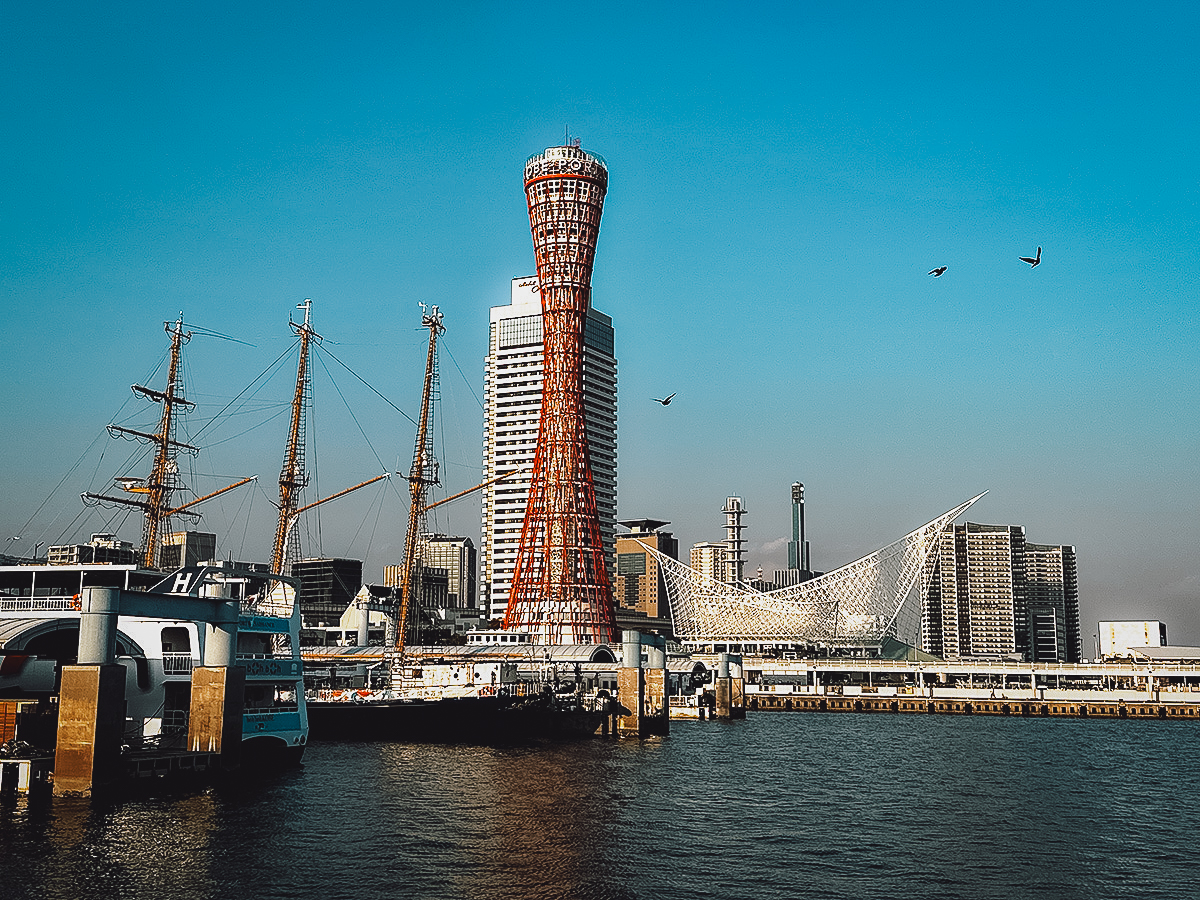
Himeji Castle
I’ve visited a few castles in Japan over the years and Himeji Castle still stands as one of the most memorable. Known as the White Heron Castle, it stands out for its size, striking white exterior, and remarkable state of preservation.
Located in Himeji, around half an hour west of Osaka via shinkansen, Himeji Castle is one of just two attractions included on Japan’s original list of UNESCO World Heritage Sites[3].
It’s also one of the twelve remaining original castles in Japan. Most Japanese castles have been wholly or partially reconstructed due to damages from earthquake, fire, or war. Himeji Castle is one of just twelve that continue to stand in its original form.
You can explore Himeji Castle on your own but if you’d rather go with a guide, then you may be interested in this Himeji bike tour or this private Himeji Castle night tour.
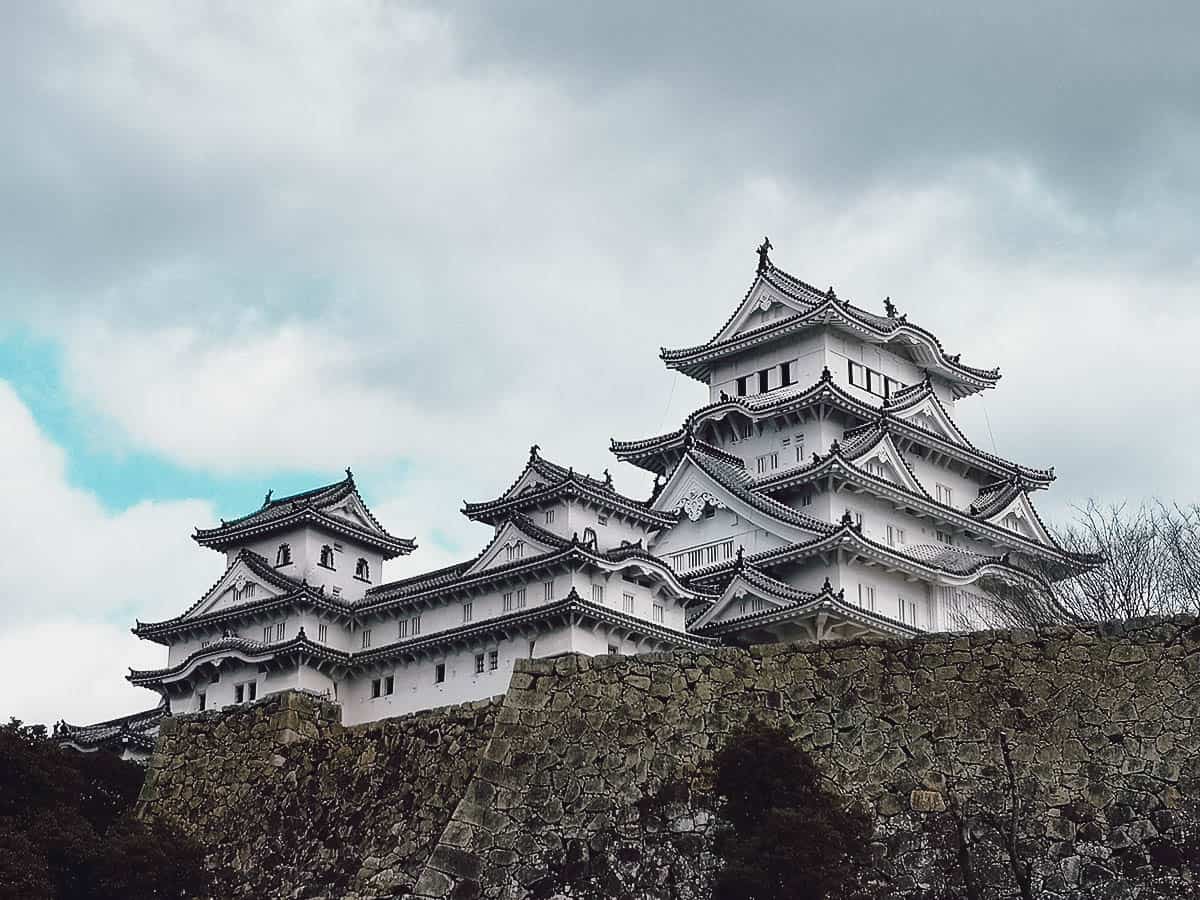
Fukusaki
If you visit Himeji Castle on a day trip, then you may want to pair it with a trip to Fukusaki, a small town located less than half an hour north of Himeji Station. Fukusaki has become known in recent years for its many colorful yokai statues. Yokai is the collective term for monsters, demons, and spirits in Japanese folklore.
Himeji Castle needs no more than 2-3 hours to fully explore so you can visit the castle in the morning before proceeding to Fukusaki in the afternoon. It’s a fun side trip that not many tourists know about (yet).
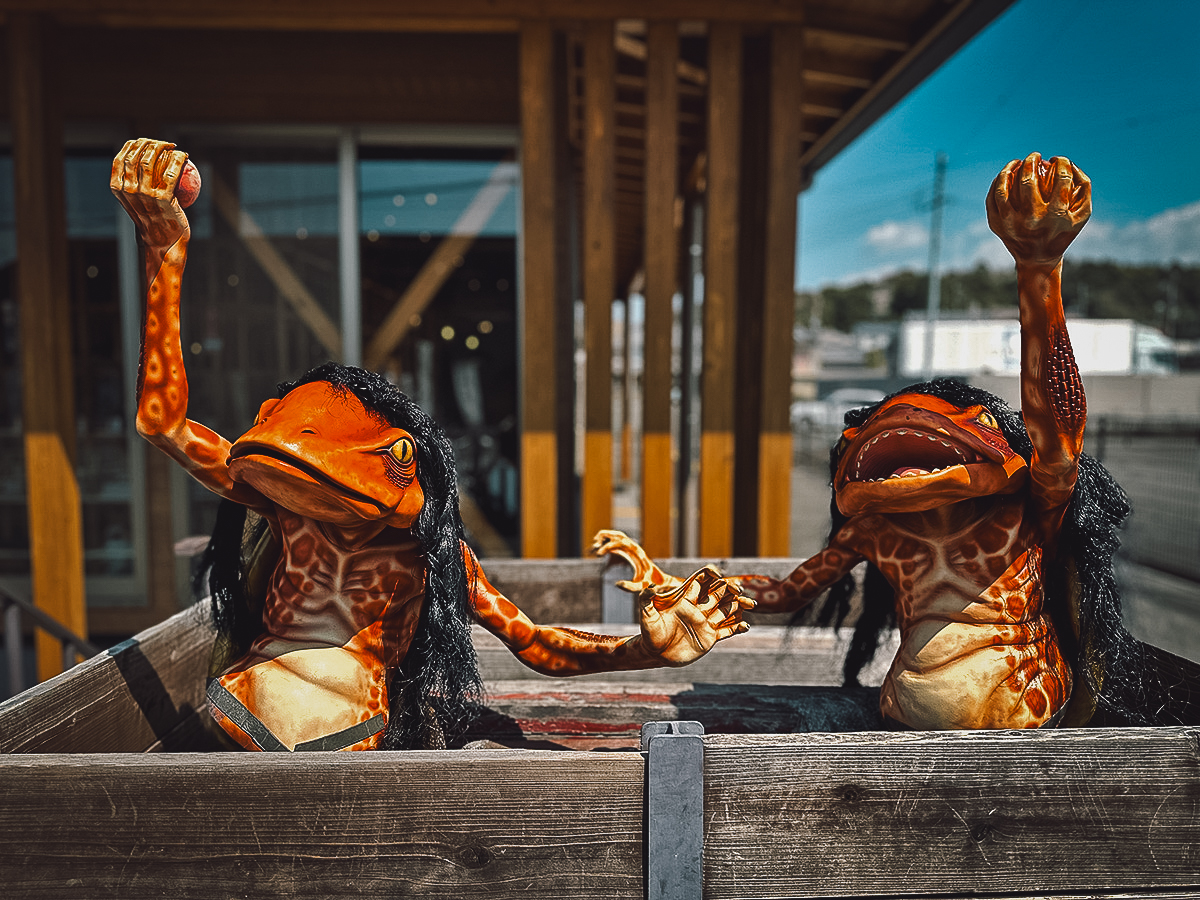
Lake Biwa
Located in Shiga Prefecture, Lake Biwa is the largest freshwater lake in Japan. You can get to the lake’s southwestern tip in less than half an hour from Kyoto Station, but you’ll need a lot more time to explore this lute-shaped lake that boasts roughly 235 km (146 miles) of shoreline[4].
Lake Biwa needs several days to fully explore but you can visit some of its most popular attractions in a day or two. Highlights include Hikone Castle, one of Japan’s twelve remaining original castles, and Omihachiman, a well-preserved former merchant town. Mangetsu-ji and its floating hall (pictured below) is another interesting stop.
Located on top of Mt Hiei, Enryaku-ji offers some of the most spectacular bird’s eye views of Lake Biwa and is well worth a visit. However, the Kansai Wide Area Pass only covers part of the journey. You’ll need to pay extra for the cable car up and down the mountain.
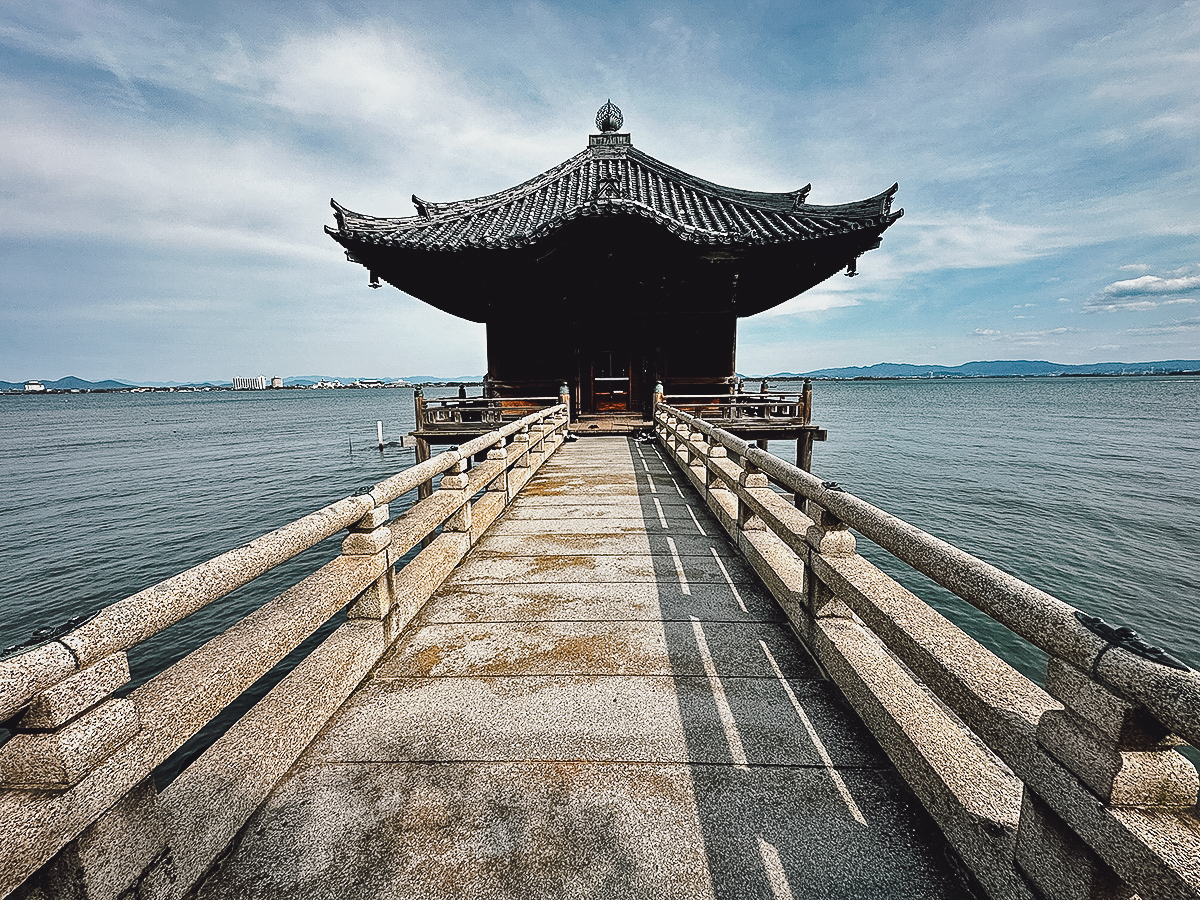
RELATED ARTICLE: Luxury Experiences in Kyoto
Amanohashidate
When doing research for your trip, you may have come across one of Japan’s “3 great” lists – 3 great onsens, 3 great landscaped gardens, 3 great night views, etc. Of those lists, arguably the most well-known is Japan’s 3 great views. The view of Amanohashidate, a slender sandbar in northern Kyoto Prefecture, is one of those views.
Translating to “bridge in heaven”, Amanohashidate is a narrow pine-covered sandbar spanning Miyazu Bay. It’s roughly 3 km long (1.9 miles) and measures just 20 meters (65.6 ft) wide at its narrowest point[5]. This lush sandbar is covered in nearly 8,000 pine trees and is best appreciated from the mountains on either side of the bay.
When you go up to the viewing platforms, you may find people bent over at the waist and looking at the sandbar through their legs. They haven’t gone mad. They’re doing matanozoki or “peeking through the thighs”[6]. When you view Amanohashidate in this way, it’s said to resemble a dragon ascending into the heavens. Personally, I don’t see it.
If you visit Amanohashidate, I highly recommended taking a local bus to the small fishing village of Ine. It isn’t covered by the Kansai Wide Area Pass, but it’s been called one of the most beautiful villages in Japan and well worth the side trip.
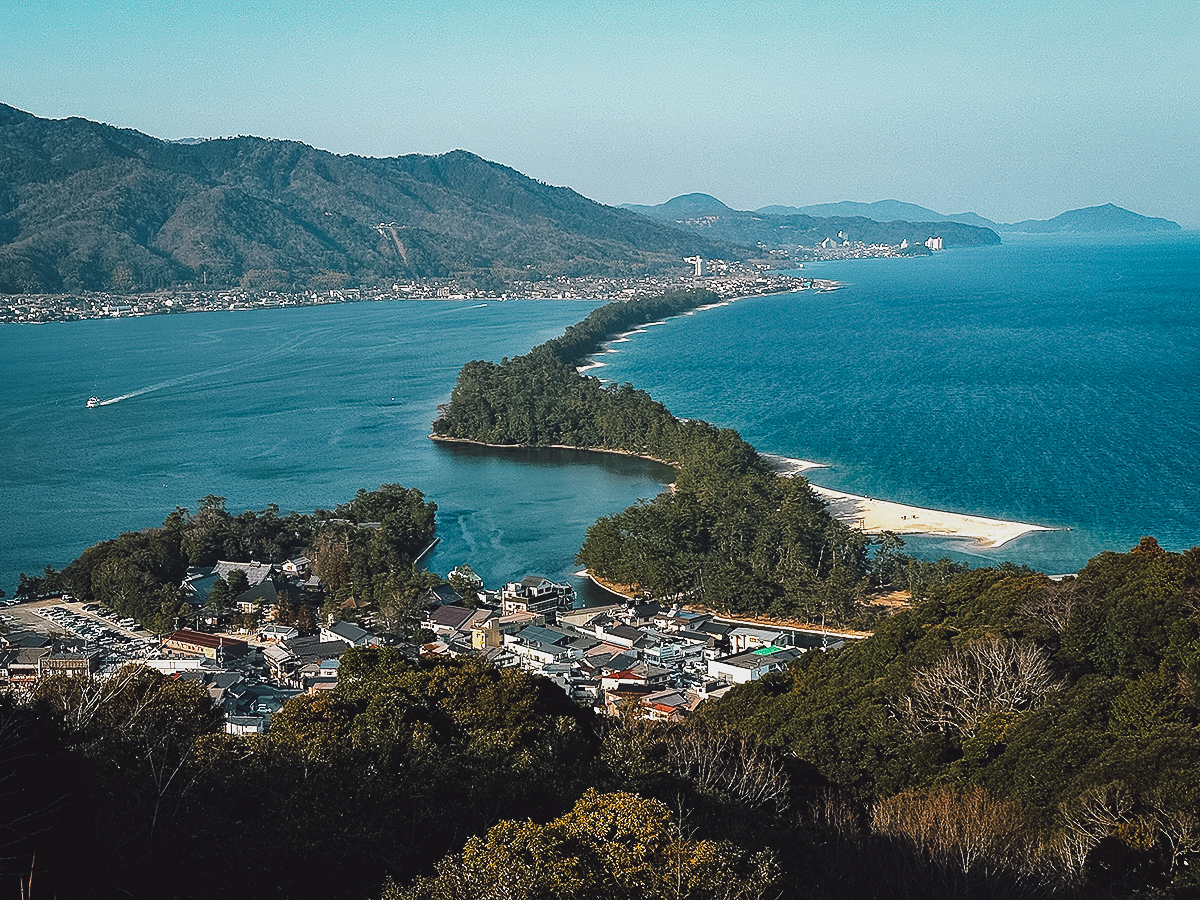
Kinosaki Onsen
I love onsens. The problem is, I have a tattoo. Tattoos are still considered taboo in Japan, so I usually stay at ryokans with private baths. I don’t have that problem at Kinosaki Onsen.
Located in northern Hyogo Prefecture, Kinosaki Onsen is one of the most popular onsen towns in the Kansai region. It’s famous for its seven tattoo-friendly soto-yu (public bathhouses) and the practice of soto-yu meguri while dressed in yukata and geta.
After checking into your ryokan or hotel, you can change into yukata (casual cloth kimono) and geta (wooden clogs) before participating in soto-yu meguri – the practice of hopping from one onsen to the next. It’s a fun tradition that makes the onsen experience even more enjoyable.
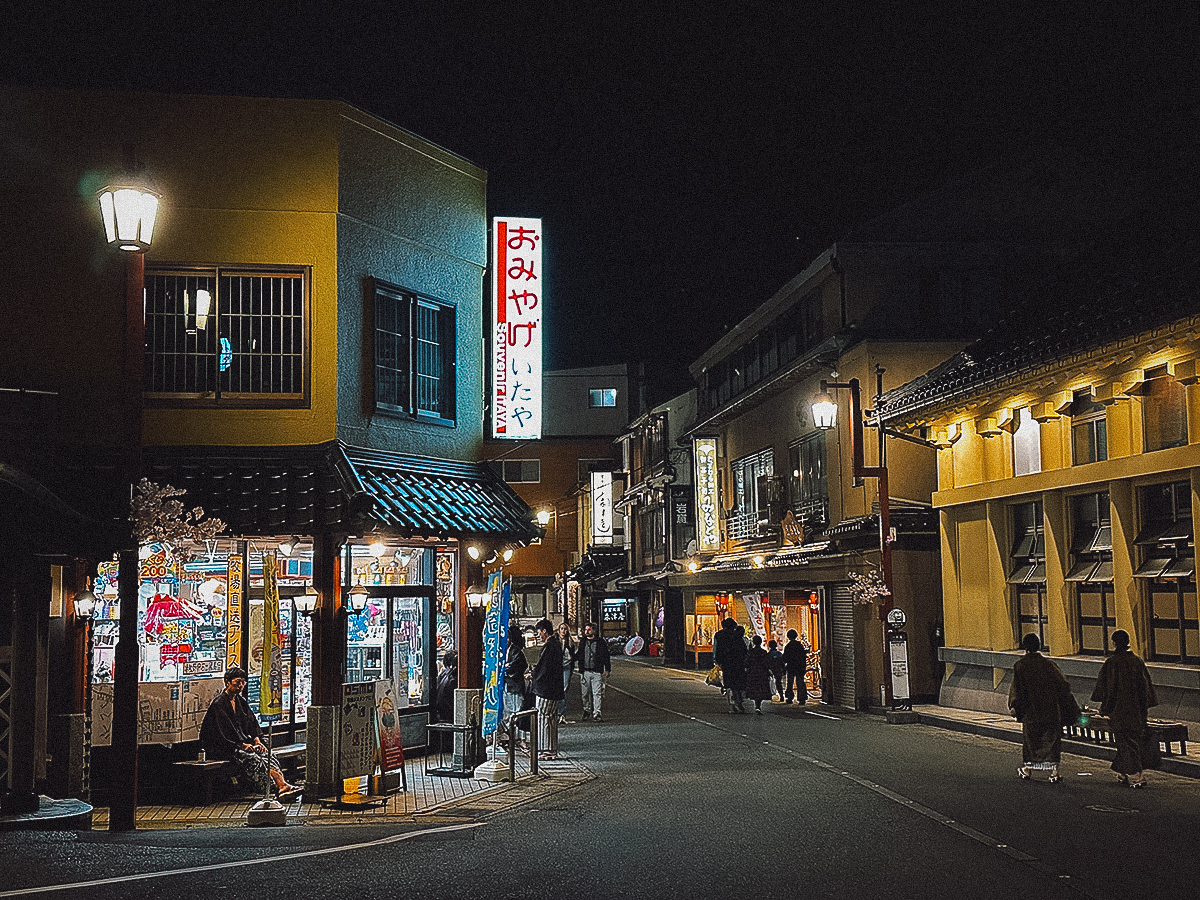
Tottori
If someone showed you the picture below, would you think it was taken in Japan? The giant sand dunes of Tottori Prefecture are a unique sight and one of the most surprising places I’ve been to thus far in Japan.
Located along the coast of the Sea of Japan, Tottori is famous for these large sand dunes that can measure up to 50 meters (164 ft) high and 2 km (1.2 miles) wide. They span roughly 16 km (9.9 miles) of coastline and were gradually formed over thousands of years by river sand washing out to sea and being redeposited by the ocean’s currents.[1].
If you visit the sand dunes of Tottori, be sure to make a stop at the nearby Sand Museum. It’s an impressive museum showcasing incredibly detailed sand sculptures created by different artists from around the world.
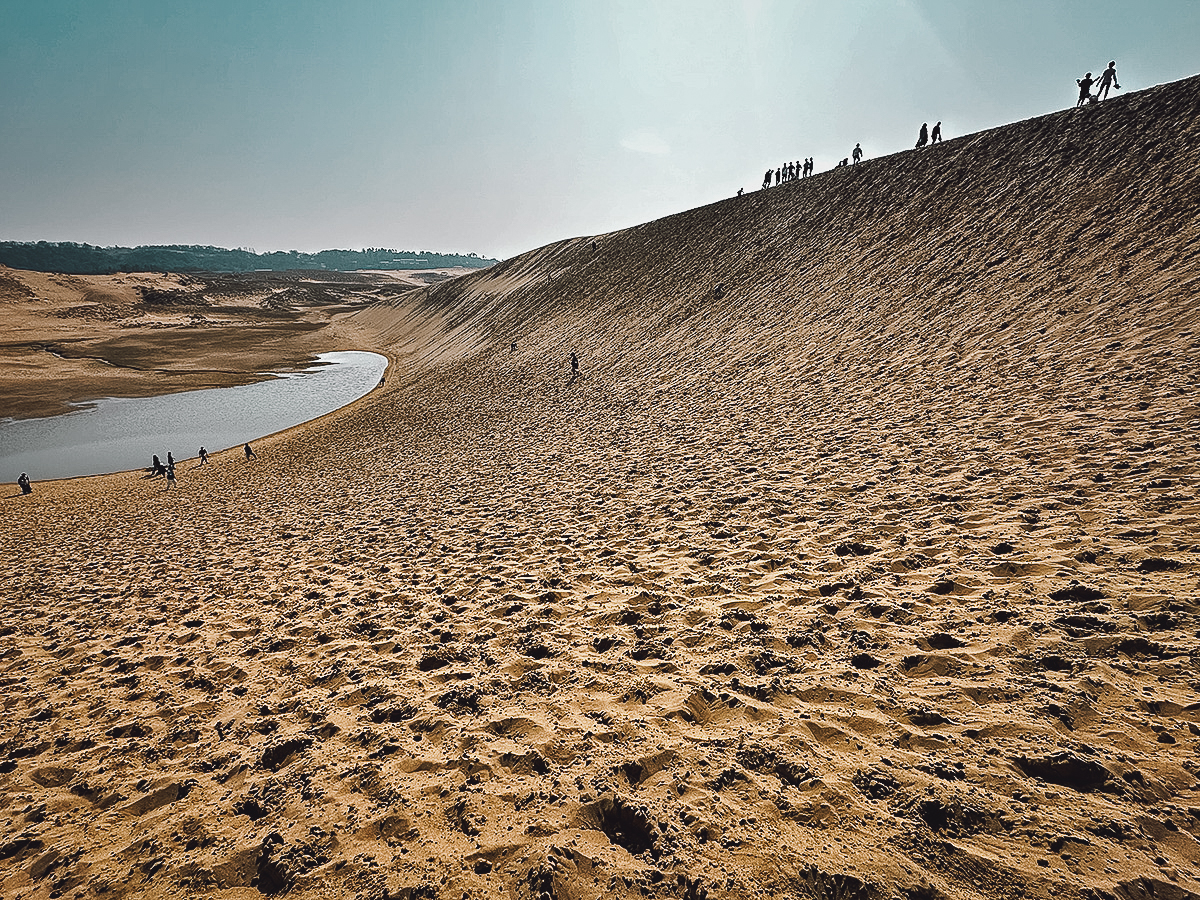
Okayama
Okayama was another city that intrigued me. Not knowing what to expect, I went there mainly to visit Koraku-en and Okayama Castle so I was pleasantly surprised to find another livable city that reminded me of a quieter and more laid back version of Osaka.
The capital of Okayama Prefecture, Okayama is the second largest city in the Chugoku region, after Hiroshima. It’s roughly 171 km (106.3 miles) west of Osaka[7] but thanks to the Sanyo Shinkansen, you can get there in around 45 minutes. The roundtrip fare between Shin-Osaka Station and Okayama Station is JPY 13,720 (May 2025), so that trip alone will recoup the cost of your Kansai Wide Area Pass.
Okayama’s top attractions include Koraku-en, one of Japan’s 3 great landscaped gardens, and Okayama Castle (pictured below). Also known as Crow Castle, Okayamajo isn’t one of Japan’s twelve original castles but it’s one of its most distinctive, thanks to its striking jet-black exterior.
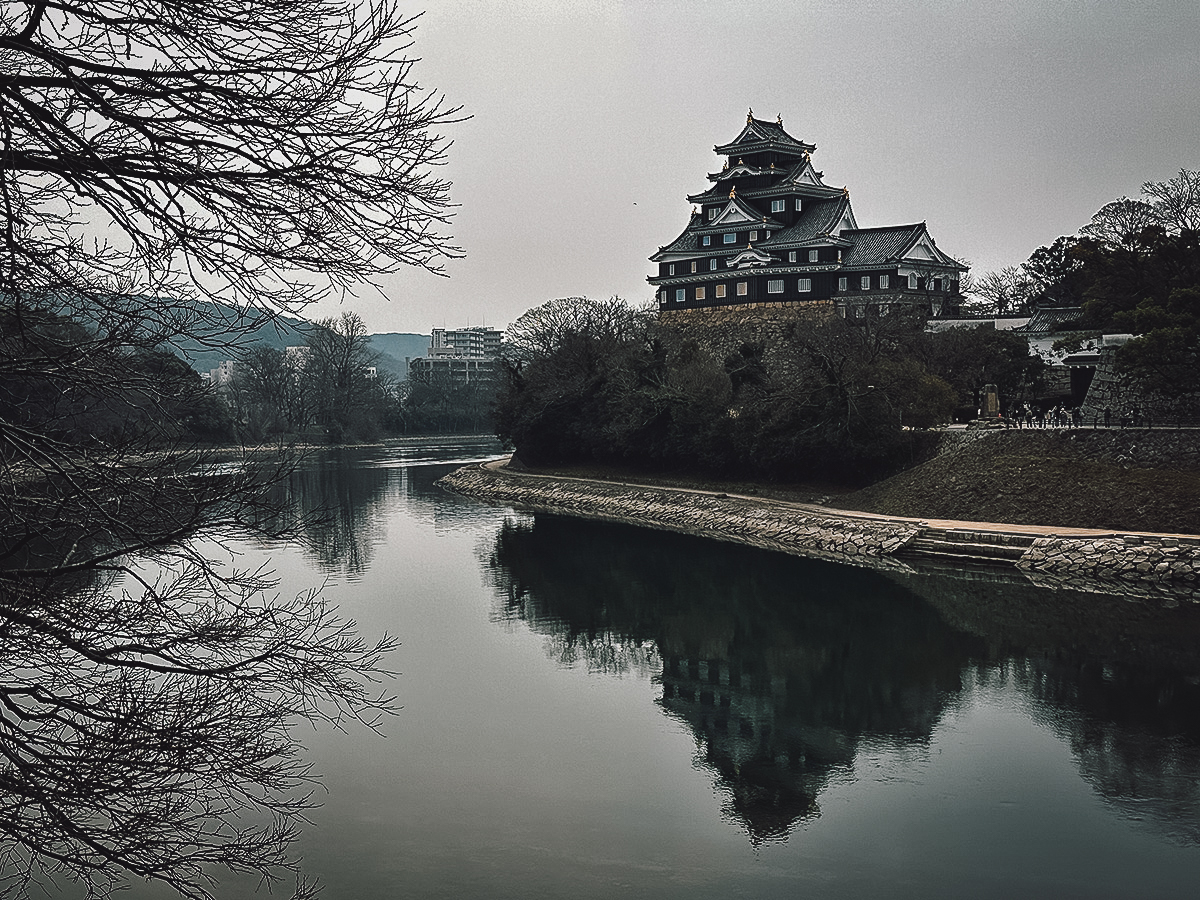
Takamatsu
If you’re traveling all the way to Okayama with the Kansai Wide Area Pass, then you may as well go the extra mile and visit Takamatsu. Located around an hour south of Okayama, its most famous attraction is Ritsurin Koen, which is arguably the most beautiful landscaped garden in all of Japan.
Strangely enough, Ritsurin Koen isn’t one of Japan’s 3 great landscaped gardens but for me, it’s the most impressive. I’ve been to many gardens in Japan, including two of the big three, and Ritsurin Koen trumps them all. In my opinion, the only garden that comes close is Kenroku-en in Kanazawa.
I only had time to visit Ritsurin Koen and Ogijima in Takayama, but it’s home to other notable attractions as well. Next time, I’ll stay longer and explore more of the city during a broader trip to Shikoku Island.
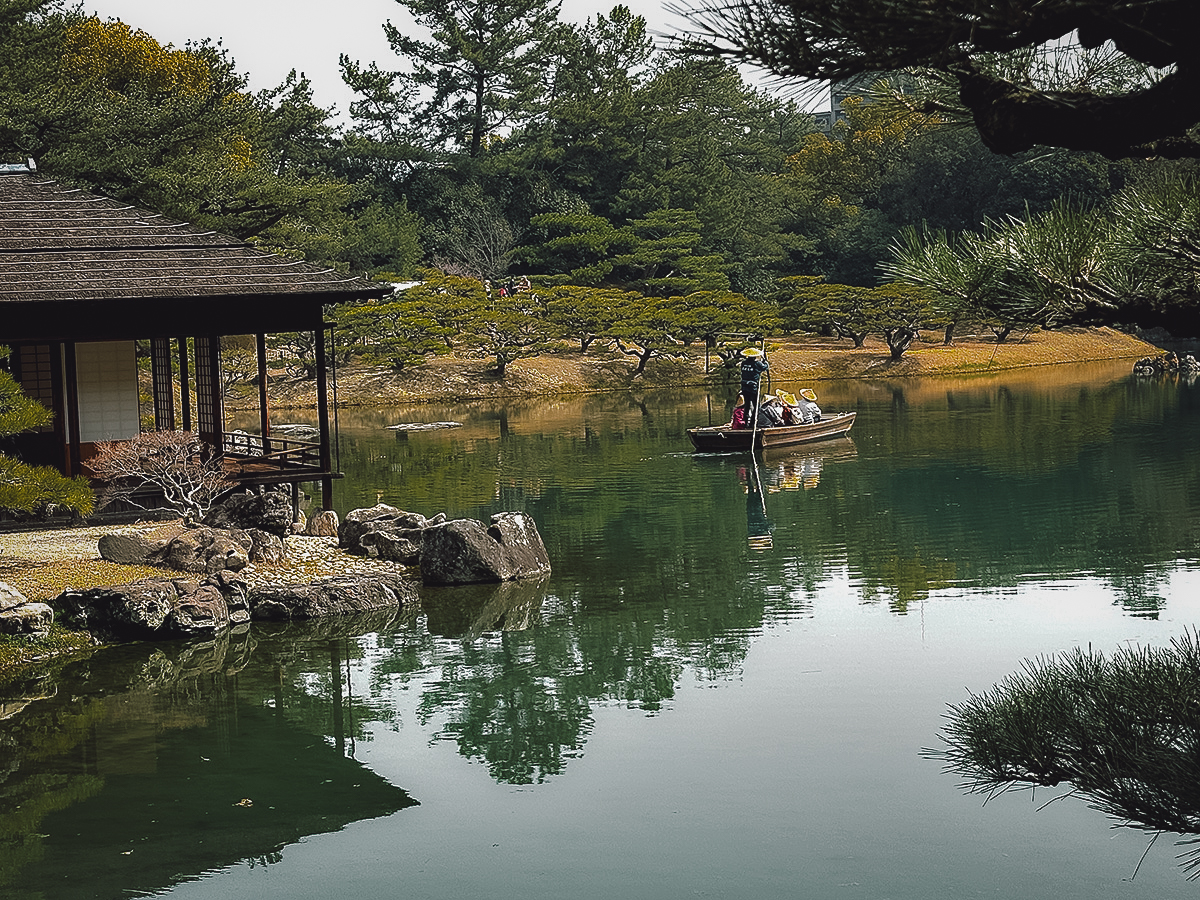
Koka & Iga Ueno
Koka and Iga Ueno are neighboring cities located in Shiga and Mie prefectures respectively. I’ve grouped them together because they’re famous for the same thing – ninja.
Koka and Iga Ueno are known as the ninja capitals of Japan. Home to two of Japan’s most famous ninja clans, they’ve done a good job in preserving their ninja heritage through well-curated museums, historical sites, and annual ninja-related events. If you’ve ever dreamt about throwing real ninja stars, then this is the place to do it.
Between the two cities, Iga Ueno is bigger and offers more to do but Koka is home to Koka-ryu Ninjutsu Yashiki (pictured below), an actual ninja house that served as the former residence of the leading Mochizuki ninja clan. In my opnion, it’s the best ninja-related attraction in both cities and shouldn’t be missed.
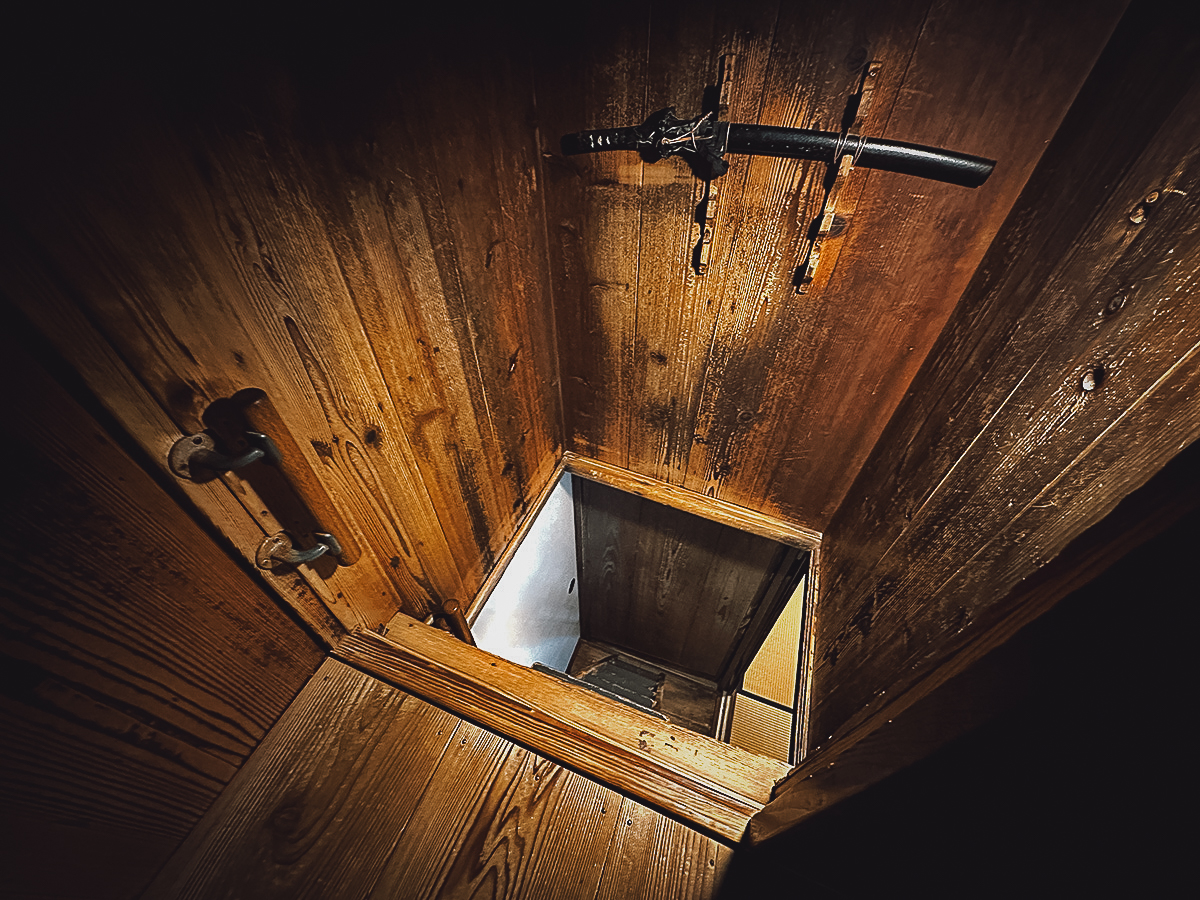
KANSAI WIDE AREA PASS FAQs
How much is the Kansai Wide Area Pass and where can I buy it?
The JR West Kansai Wide Area Pass costs JPY 12,000 (May 2025) and can be purchased online on JR West or through authorized resellers like Klook. It can also be purchased at select JR stations and travel agencies in Japan.
If you purchase your pass online through JR West, then you’ll have the added benefit of making seat reservations through the website. Otherwise, you’ll need to reserve seats at JR ticketing offices or through ticket machines.
Since this is a physical pass, you’ll need to pick it up at a major JR station within the covered area before you can start using it.
How long is it valid for?
The Kansai Wide Area Pass is valid for five (5) consecutive calendar days – not 24-hour periods. So even if you begin using it at 11:30 PM on March 1st, March 1st will still count as your first full day.
How do I use the pass?
The Kansai Wide Area Pass is a physical ticket, roughly the size of a credit card. To use it, simply insert it into the station’s ticket gate. The gate will return the pass through the exit slot so make sure you collect it before walking through!
Can I use the pass on local trains in Osaka and Kyoto?
Yes you can, but only on trains operated by JR West.
To check if a route is covered, you can plot your trip on Google Maps. After selecting a route, click on “Details” and scroll down to find the name of the operating company. If it’s JR West, then you can use it.
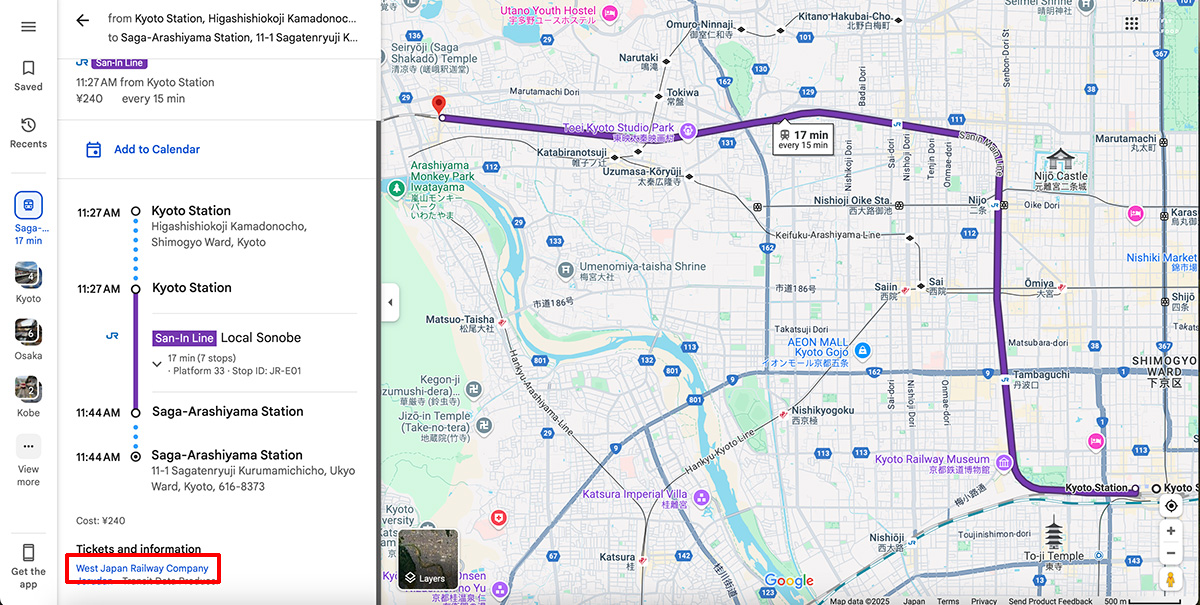
Is the pass transferrable?
No, it’s for individual use only. Since the pass is exclusively for non-Japanese passport holders with a “Temporary Visitor” visa status (ie non-residents), it’s best to carry your passport with you at all times for verification.
Do I need to reserve seats?
TRAINS
While the vast majority of trains in Japan have cars with reserved seating and cars with non-reserved seating, a few trains covered by the Kansai Wide Area Pass operate with fully reserved cars only. If you plan on taking any of these trains, then seat reservations are a must.
On trains with non-reserved cars, making seat reservations isn’t required, though they’re highly recommended during peak travel seasons. I used my Kansai Wide Area Pass a couple of weeks before peak cherry blossom season and some routes were full while others were nearly empty.
Personally, I like to make reservations whenever I can to always guarantee myself a seat. Having to stand on a two-hour train ride doesn’t sound like fun.
BUSES
The Kansai Wide Area Pass is valid on select local JR buses, not on expressway buses. Local JR buses don’t have reserved seating.
How do I make seat reservations?
Seat reservations can be made at ticket machines or through JR station ticketing offices. You’ll need to do this before boarding. You can make up to six (6) seat reservations at a ticketing machine. Any reservations after the sixth must be made at a JR ticket office.
If you purchased your Kansai Wide Area Pass online through JR West, then you can make seat reservations through the website. Like the Kansai Wide Area Pass itself, you’ll need to pick up the physical tickets for the seat reservations at a JR station.
For people making seat reservations online, please note that some routes – like the Kyoto Tango Railway – can’t be booked on the JR West website. They need to be booked at the JR ticketing office. I had to do this for the Kyoto-Miyazu and Miyazu-Kinosakionsen legs of my trip. I believe it’s the same for the other non-JR lines as well (lines marked in green on this map).
Seat reservations can be made up to one (1) month in advance.
Where can I get more information?
If you need more information about the Kansai Wide Area Pass, then you can visit the JR West website.
IS THE JR WEST KANSAI WIDE AREA PASS WORTH IT?
Like any rail pass in Japan, it depends on how often you use it. If you use it only to travel between Osaka, Kyoto, Nara, and Kobe, then it won’t be worth the investment. But if you use it to visit more distant destinations like Tottori and Okayama, then it can save you a significant amount of money.
Here’s exactly how I used it:
DAY 1: Kyoto – Miyazu, Amanohashidate – Miyazu
DAY 2: Miyazu – Toyooka, Toyooka – Kinosakionsen
DAY 3: Kinosakionsen – Tottori
DAY 4: Tottori – Okayama, Okayama – Bizenichinomiya, Soja – Okayama
DAY 5: Okayama – Takamatsu, Takamatsu – Okayama, Okayama – Shin-Osaka
The pass costs JPY 12,000. Without it, I would have paid a total of JPY 30,170 (April 2025) for transportation. That’s a savings of JPY 18,170!
I extracted over 2.5 times the value of the pass but it did require me to move and stay in a different city every night. Most of the places I visited required no more than a day to fully explore so the pass was ideal for me, but for some people, a trip like that may be too tiring.
If you plan on using it mainly to travel between Kyoto, Osaka, Nara, and Kobe, the pass can still pay off if you take at least one day or overnight trip to a more distant destination like Okayama or Kinosaki Onsen. The roundtrip fare between Osaka and Okayama, for example, costs JPY 13,720 (May 2025). That alone will pay for the cost of the pass.
Disclosure
Some of the links in this article on the Kansai Wide Area Pass are affiliate links, meaning we’ll get a small commission if you make a purchase at no added cost to you. We only recommend products and services that we use ourselves and firmly believe in. We really appreciate your support as this helps us make more of these free travel guides. Arigato gozaimasu!
References
1. Tottori Sand Dunes. Japan Travel.
2. Kyoto’s Temples and Shrines. My Kyoto Machiya. (2015, March 15).
3. Japan’s World Heritage Sites. japan-guide.com.
4. Lake Biwa. The Gate to Kansai. (2024, June 18).
5. Amanohashidate Sandbar. Travel Japan – The Official Japan Guide.
6. “Matanozoki” and “Hiryukan”. Amanohashidate View Land.
7. Okayama to Osaka. Rome2Rio.

